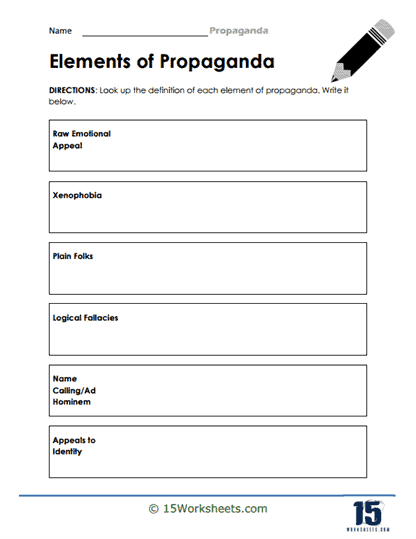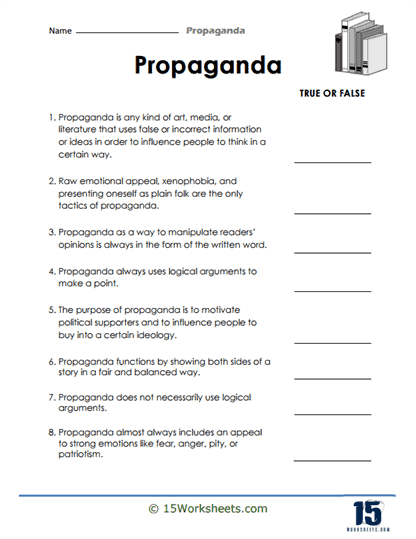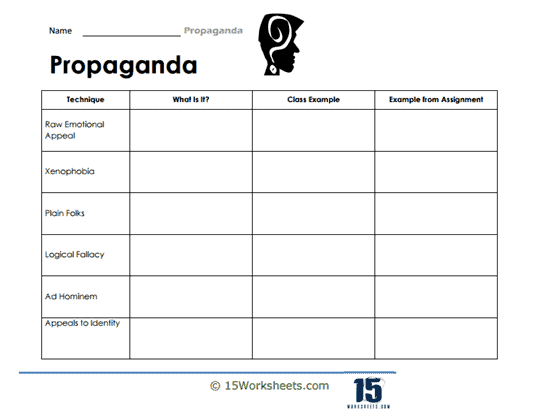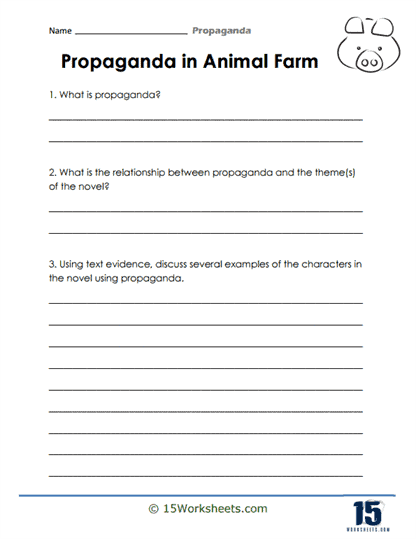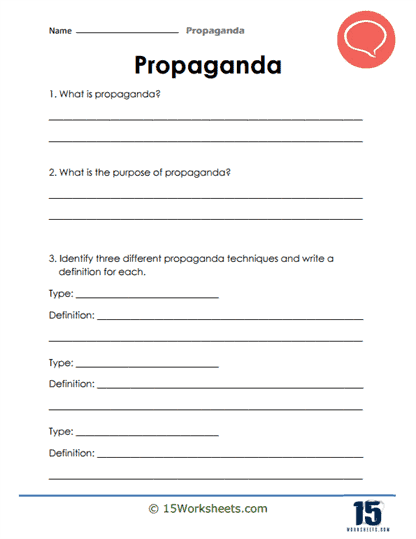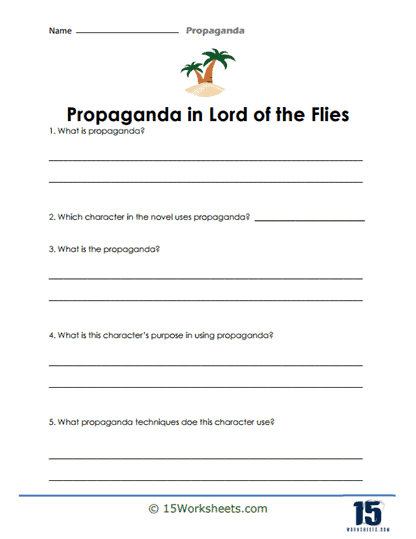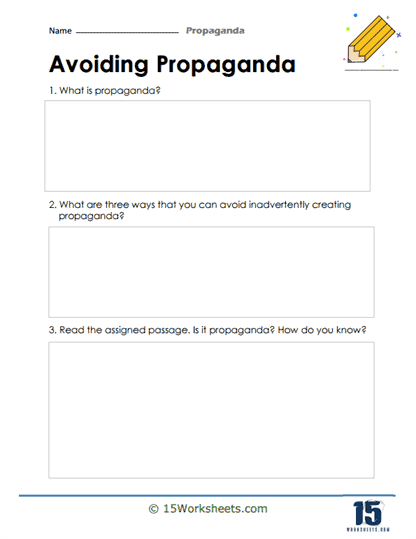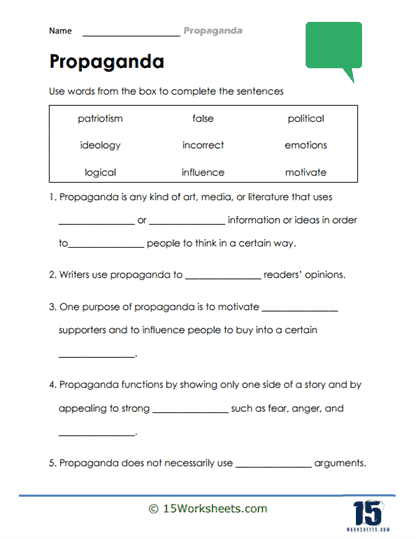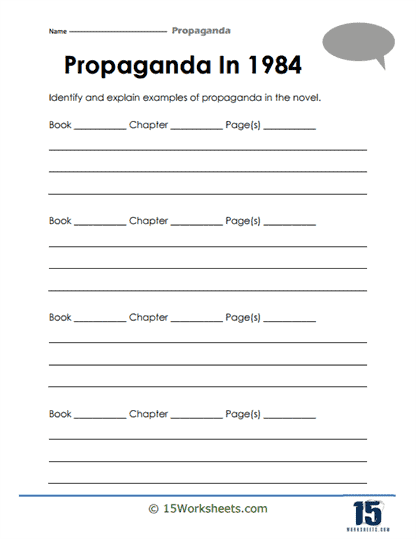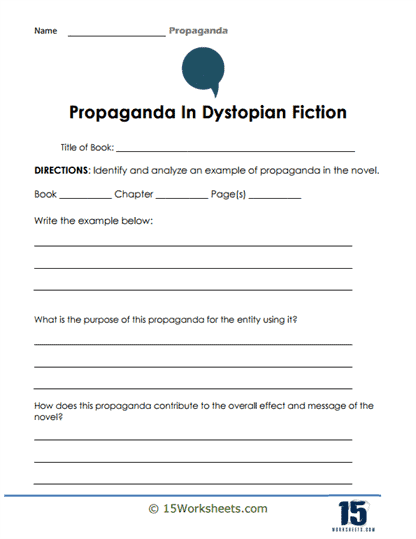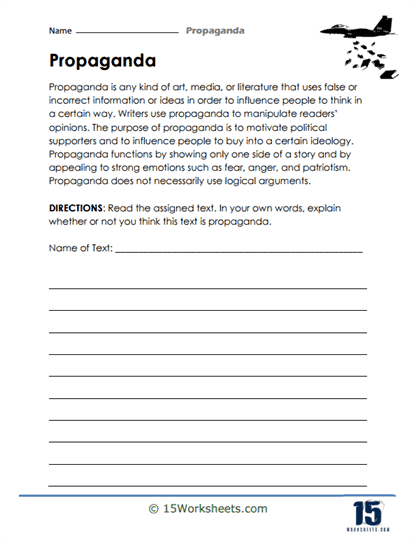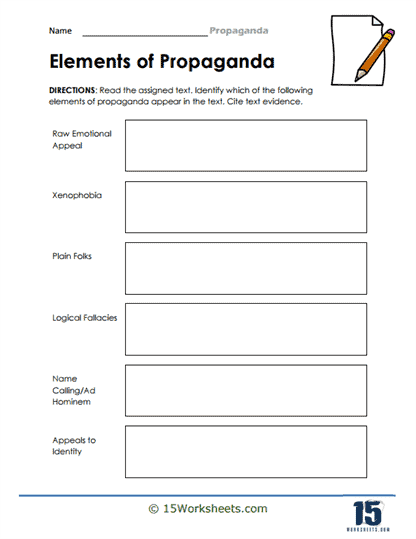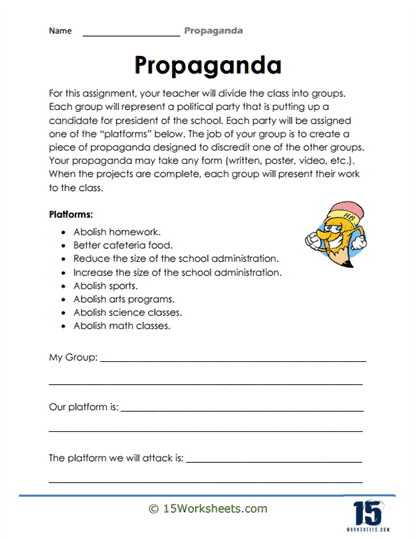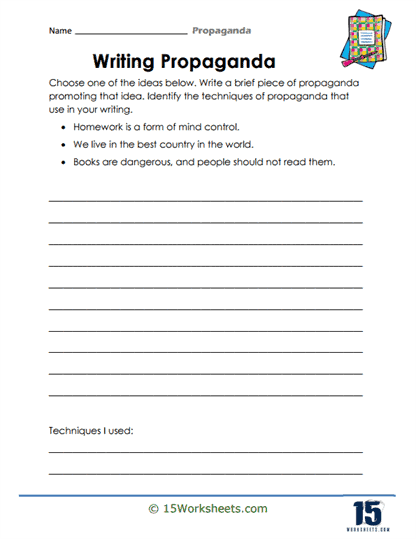Propaganda Worksheets
All About These 15 Worksheets
Propaganda, the deliberate dissemination of information or ideas to manipulate and influence people’s beliefs, opinions, and behaviors, is a pervasive force in our world. Understanding propaganda is not only important for students to be informed citizens but also for developing critical thinking, media literacy, and the ability to discern credible information from manipulation.
This collection of 15 worksheets is designed to introduce students to the world of propaganda, helping them grasp the importance of recognizing and analyzing this powerful tool, understanding its various forms, and cultivating critical thinking skills.
What Are Propaganda Worksheets?
Propaganda worksheets aim to help students understand the concept of propaganda, a form of communication used to influence people’s attitudes, beliefs, and behaviors toward certain causes or positions, often through manipulation or deception.
These worksheets often include a variety of exercises designed to teach students about different propaganda techniques, how to identify them in various forms of media (such as advertisements, political speeches, posters, and news), and how to critically analyze them. Here are a few types of exercises you might expect:
Identification – In these exercises, students are given examples of propaganda in different forms – such as texts, pictures, or video clips – and asked to identify which propaganda technique is being used. For example, they may be shown a war-time poster and asked whether it uses techniques like bandwagon (persuading the target audience to follow the crowd), fear (creating a sense of dread and making the audience feel as if their safety is in jeopardy if they don’t comply), or glittering generalities (using vague words or phrases that bring to mind values people agree with).
Analysis – These exercises ask students to go deeper into examining how propaganda works. They might be asked to analyze a particular advertisement or political speech, discussing what techniques are used, why they are effective, and what the creator’s purpose might be.
Creation – These exercises ask students to create their own examples of propaganda. This could be as simple as coming up with a slogan that uses the “plain folks” technique (making the audience feel the speaker is “one of them”) or as complex as creating a complete advertisement campaign for a mock product or political campaign. This type of exercise helps students understand propaganda techniques from the inside out, which can aid in their ability to recognize these tactics in real-world scenarios.
Through these worksheets, students not only learn about propaganda and its historical significance but also gain vital skills in critical thinking and media literacy. This can help them become more informed and discerning consumers of information in today’s media-saturated world.
What is the Literary Device of Propaganda?
Propaganda is not strictly a literary device but a form of communication typically used in politics, advertising, and other areas, designed to influence the audience’s attitudes, beliefs, and actions towards certain causes or positions. It often involves psychological manipulation, presenting facts selectively (lying by omission), and appealing to emotions rather than logical reasoning.
However, authors, especially those of dystopian or political literature, use aspects of propaganda as a narrative tool to underscore their themes, often to critique or satirize the power of mass manipulation, ideological control, and the potential abuses of authority.
Defining Features of Propaganda
Propaganda is characterized by its purposeful attempt to shape perceptions, manipulate cognition, and direct behavior to achieve a response that furthers the intent of the propagandist. It often uses emotional appeal, generalizations, and manipulation of information to create a particular point of view. It may present arguments in ways that are potentially deceitful, coercive, or biased, and it often appeals to people’s fears, hopes, and prejudices.
Examples of Propaganda in Literature
“1984” by George Orwell
“1984” is perhaps the most well-known literary exploration of propaganda. The government of Oceania, represented by the Party, uses propaganda to maintain absolute control over its citizens. One clear example is the Two Minutes Hate, a daily event where citizens watch films portraying the state’s enemies and are whipped up into a frenzy of hatred and fear. The Party also uses propaganda to manipulate the past, constantly rewriting history to suit its present needs. The state’s use of propaganda underscores the theme of totalitarian control and manipulation of truth.
“Animal Farm” by George Orwell
Propaganda is a central theme in “Animal Farm” as well, represented by the character Squealer. Squealer, acting on behalf of the pigs (the ruling class), uses clever, persuasive, and manipulative speeches to twist the truth and justify the pigs’ privileges. For instance, when the pigs start to sleep in beds, a violation of the farm’s commandments, Squealer persuades the other animals that the pigs need the beds for their “brain work.” Orwell uses this character to show how propaganda can be used to exploit and control, a critique of the manipulative rhetoric used in Stalinist Russia.
“Brave New World” by Aldous Huxley
In “Brave New World,” propaganda is used to maintain social stability and control in the World State. The government uses hypnopedia (sleep-teaching) to condition its citizens from a young age, with repeated slogans such as “everyone belongs to everyone else” to promote societal values. The use of such psychological manipulation represents a critique of consumer culture and the use of mass media to condition public sentiment.
While propaganda is not a literary device in the traditional sense, its representation in literature serves as a powerful tool for authors to comment on societal and political issues. It allows them to expose the ways in which authority can be misused to manipulate the masses, challenge the reader’s perception of truth, and highlight the dangers of uncritical obedience to authority.
In the given examples, Orwell and Huxley use representations of propaganda to critique totalitarianism, ideological manipulation, and the loss of individual freedom. By doing so, they engage readers in a deeper understanding of these issues and encourage them to critically analyze the information presented to them in their own lives.
Benefits Of Propaganda Worksheets To Students
Exploring the world of propaganda through this collection of 15 critical worksheets offers students an opportunity to develop essential skills in media literacy, critical thinking, civic engagement, ethical awareness, and cultural and historical understanding. Propaganda is a powerful tool that influences opinions and decisions, and students must be equipped to navigate and critically assess the information they encounter.
By engaging with these exercises and activities, students not only enhance their academic abilities but also gain valuable tools for responsible citizenship, ethical decision-making, and discerning the truth in an increasingly complex information landscape. The benefits of studying propaganda extend far beyond the classroom, empowering students to be informed, critical, and ethical consumers and communicators in a world saturated with persuasive messages.

